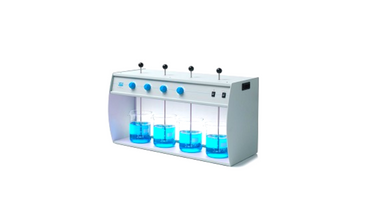
The Flocculators, also known as Jar Testing Equipment are devices that test the efficiency of flocculation and how well the suspended solids can mix with a liquid. The most common use is in water treatments and testing industries.
-
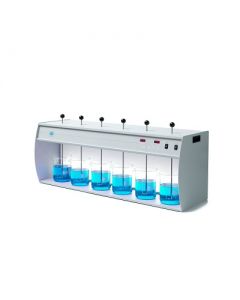 Velp JLT6 Flocculator 100-240V / 50-60HzThe Velp JLT6 is a six position flocculator designed for a range of applications such as testing the efficiency of flocculation or precipitation agents and the Leaching test. Digitally selectable speed from 10 to 300 rpm,with microprocessor controlled operating time for unattended operation,high visibility LED displays of speed and time and illuminated back panel to simplify sample observation. Stirring rods are adjustable in height without tools. Learn More
Velp JLT6 Flocculator 100-240V / 50-60HzThe Velp JLT6 is a six position flocculator designed for a range of applications such as testing the efficiency of flocculation or precipitation agents and the Leaching test. Digitally selectable speed from 10 to 300 rpm,with microprocessor controlled operating time for unattended operation,high visibility LED displays of speed and time and illuminated back panel to simplify sample observation. Stirring rods are adjustable in height without tools. Learn More -
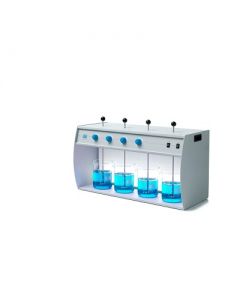 Velp FC4S Flocculator 100-240V / 50-60HzThe Velp FC4S is a four position flocculator designed for a range of applications such as testing the efficiency of the flocculation or precipitation agents and the leaching test. The S series has independently selectable speed for each position; 10-15-30-45-60-90-120-150-200-300 rpm. The speed can be changed during the run. Learn More
Velp FC4S Flocculator 100-240V / 50-60HzThe Velp FC4S is a four position flocculator designed for a range of applications such as testing the efficiency of the flocculation or precipitation agents and the leaching test. The S series has independently selectable speed for each position; 10-15-30-45-60-90-120-150-200-300 rpm. The speed can be changed during the run. Learn More -
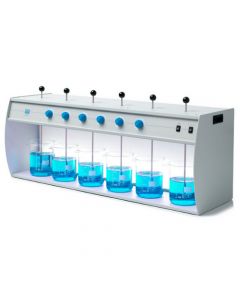 Velp FC6S Flocculator 100-240V / 50-60HzThe Velp FC6S is a six position flocculator designed for a range of applications such as testing the efficiency of the flocculation or precipitation agents and the leaching test. The S series has independently selectable speed for each position; 10-15-30-45-60-90-120-150-200-300 rpm. The speed can be changed during the run. Learn More
Velp FC6S Flocculator 100-240V / 50-60HzThe Velp FC6S is a six position flocculator designed for a range of applications such as testing the efficiency of the flocculation or precipitation agents and the leaching test. The S series has independently selectable speed for each position; 10-15-30-45-60-90-120-150-200-300 rpm. The speed can be changed during the run. Learn More -
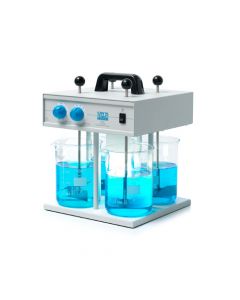 Velp FP4 Flocculator 100-240V/50-60HzThe Velp FP4 is a four position portable flocculator with a choice of 20-40-50-100-200 rpm stirring speeds and selectable operating time for unattended operation. Designed to be used on-site for immediate results, it is powered by dedicated battery or from car cigarette lighter. Learn More
Velp FP4 Flocculator 100-240V/50-60HzThe Velp FP4 is a four position portable flocculator with a choice of 20-40-50-100-200 rpm stirring speeds and selectable operating time for unattended operation. Designed to be used on-site for immediate results, it is powered by dedicated battery or from car cigarette lighter. Learn More -
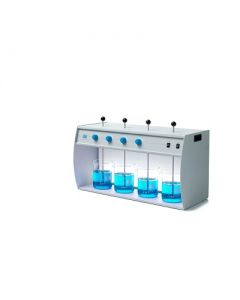 Velp Flocculators
Velp FlocculatorsFlocculators, or jar testers, are designed for a range of applications.
- Testing the efficiency of flocculation or precipitation agents.
- Leaching test, made on solid wastes for disposal, using diluted acetic acid or carbon dioxide-saturated water to detect the presence of toxic heavy metals.
